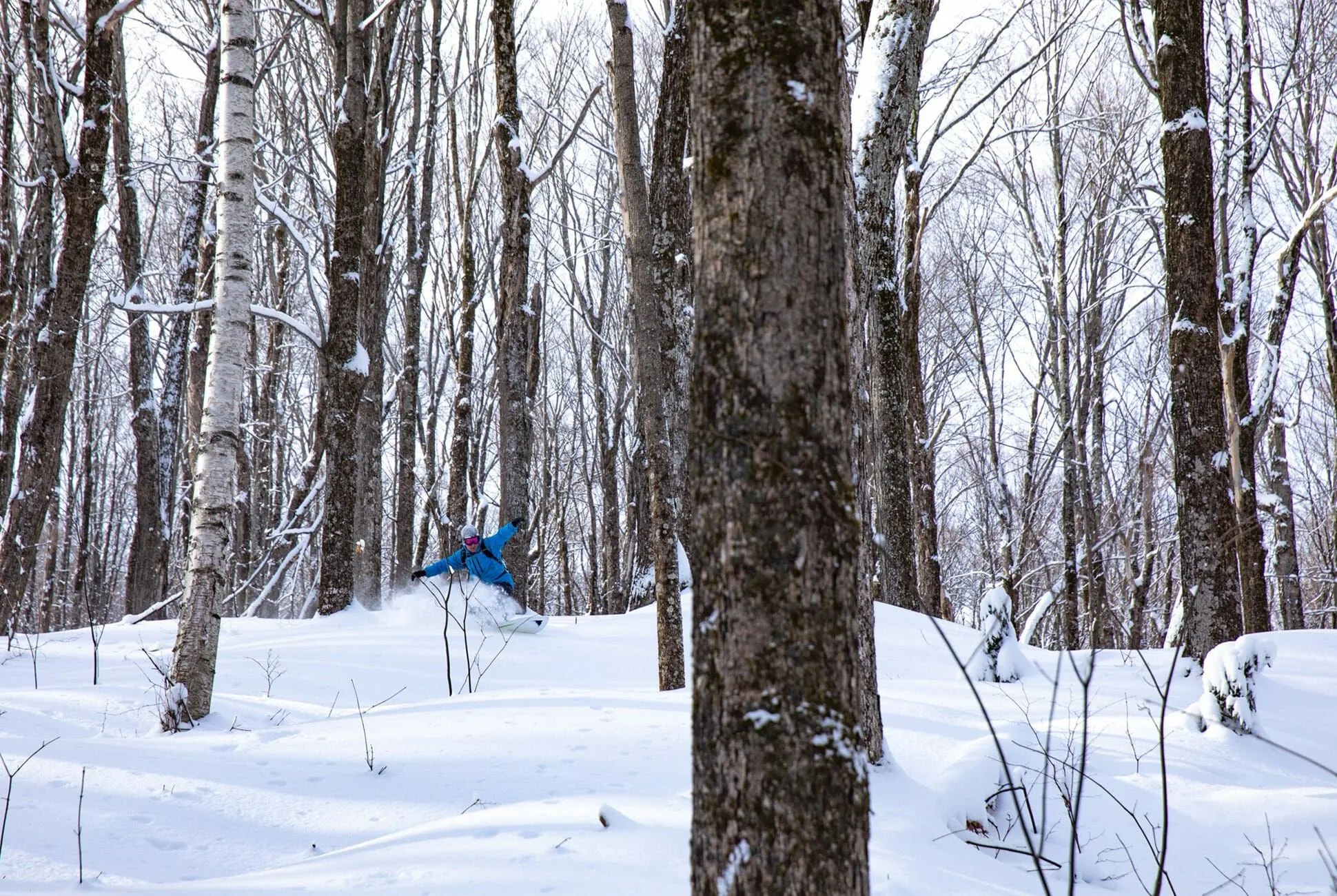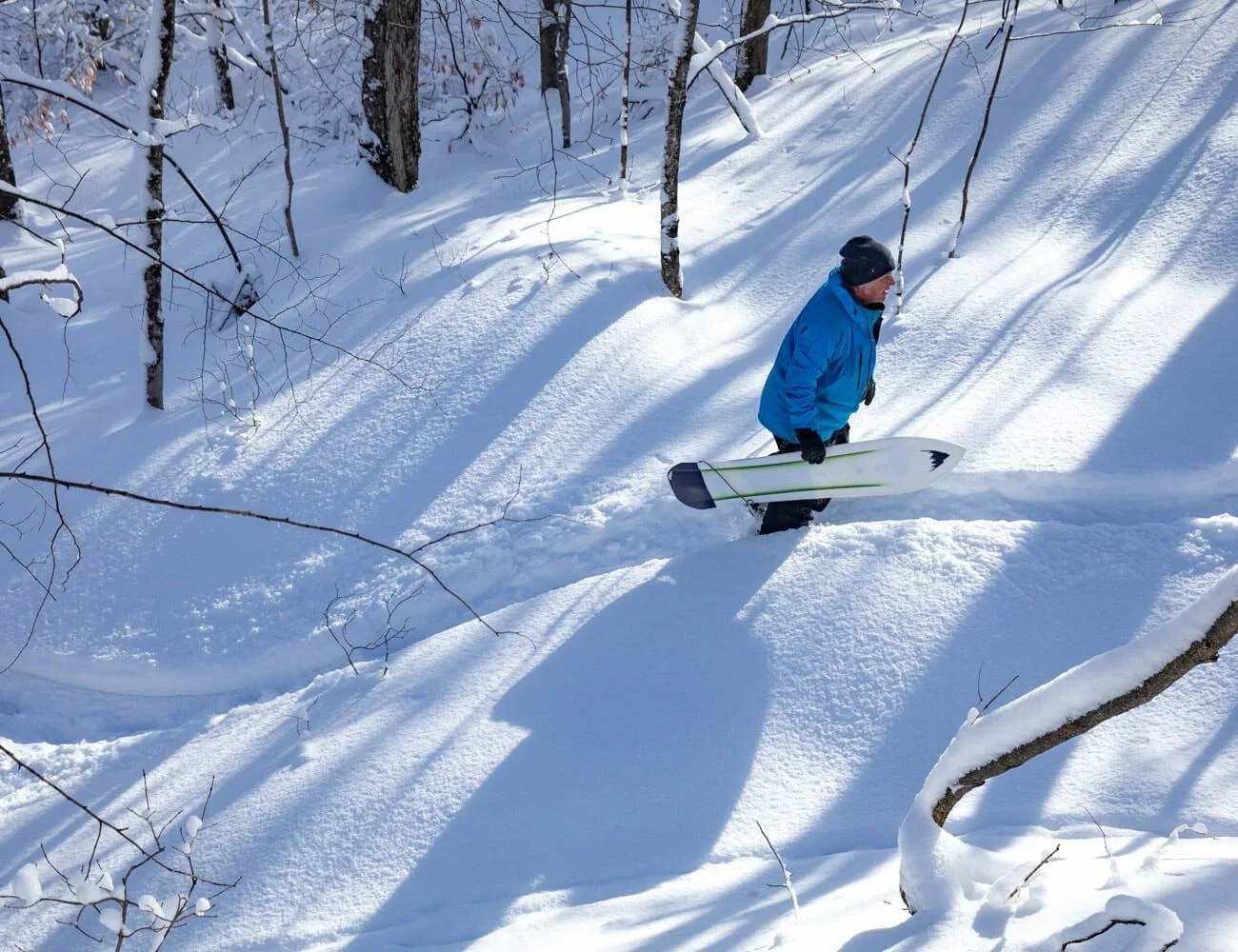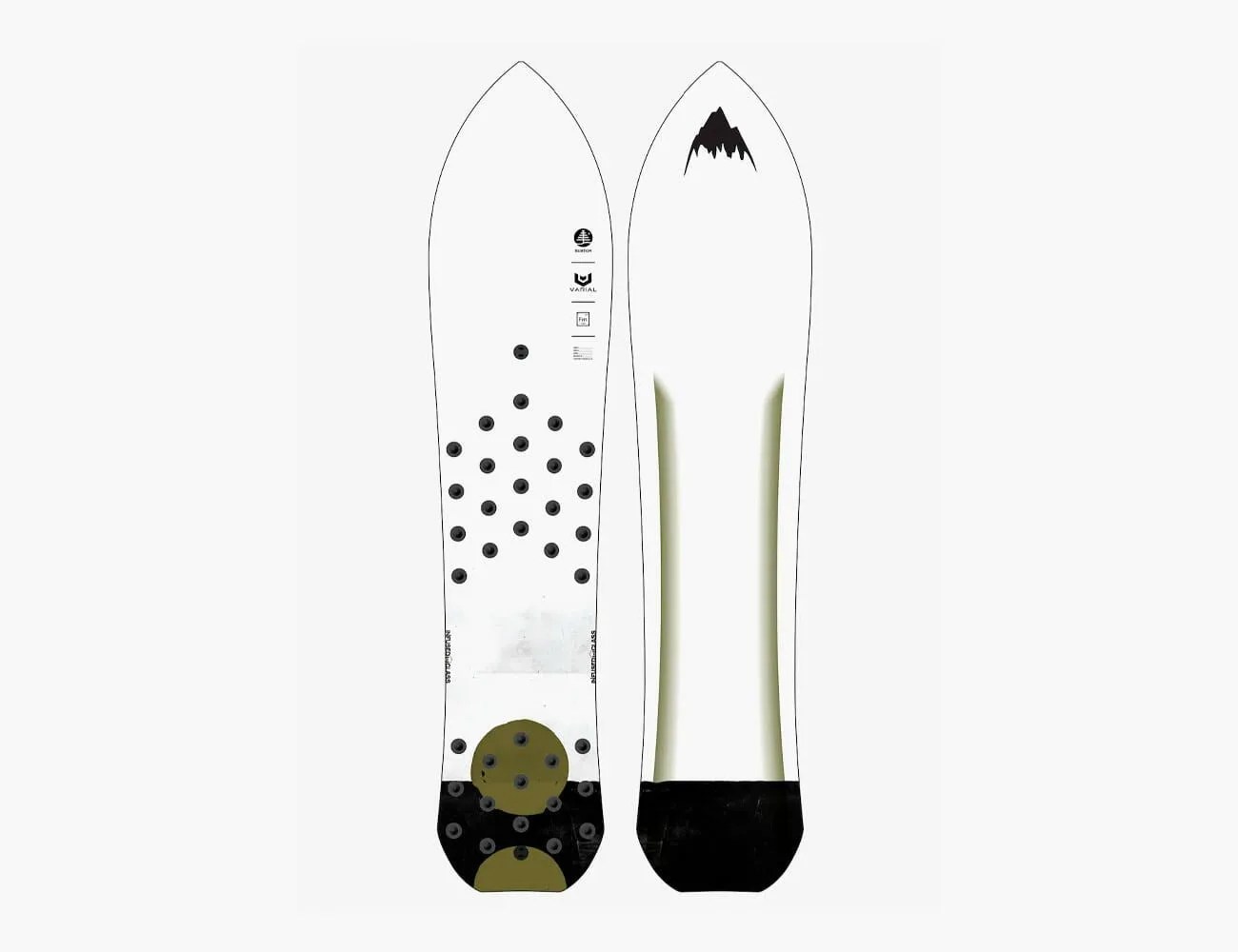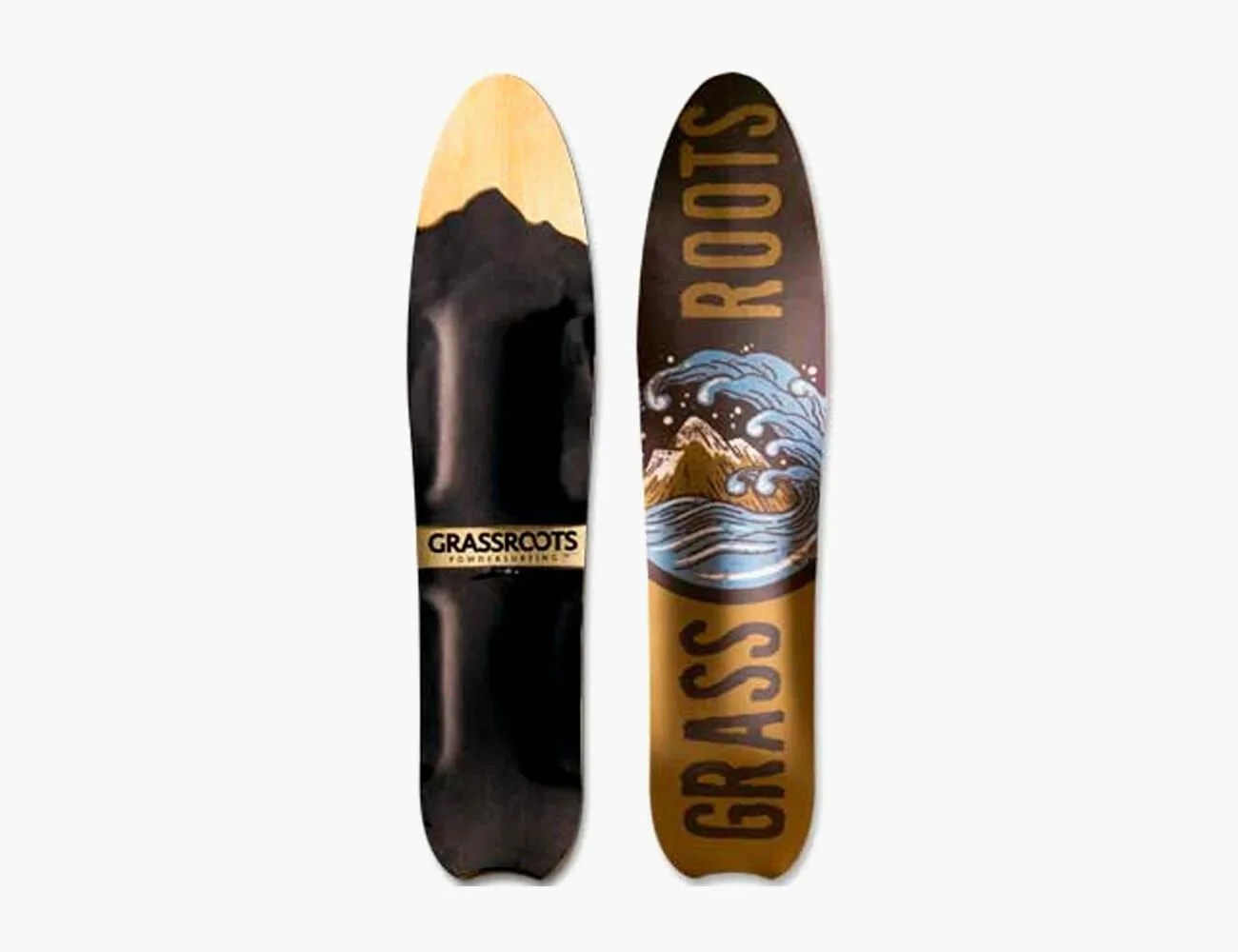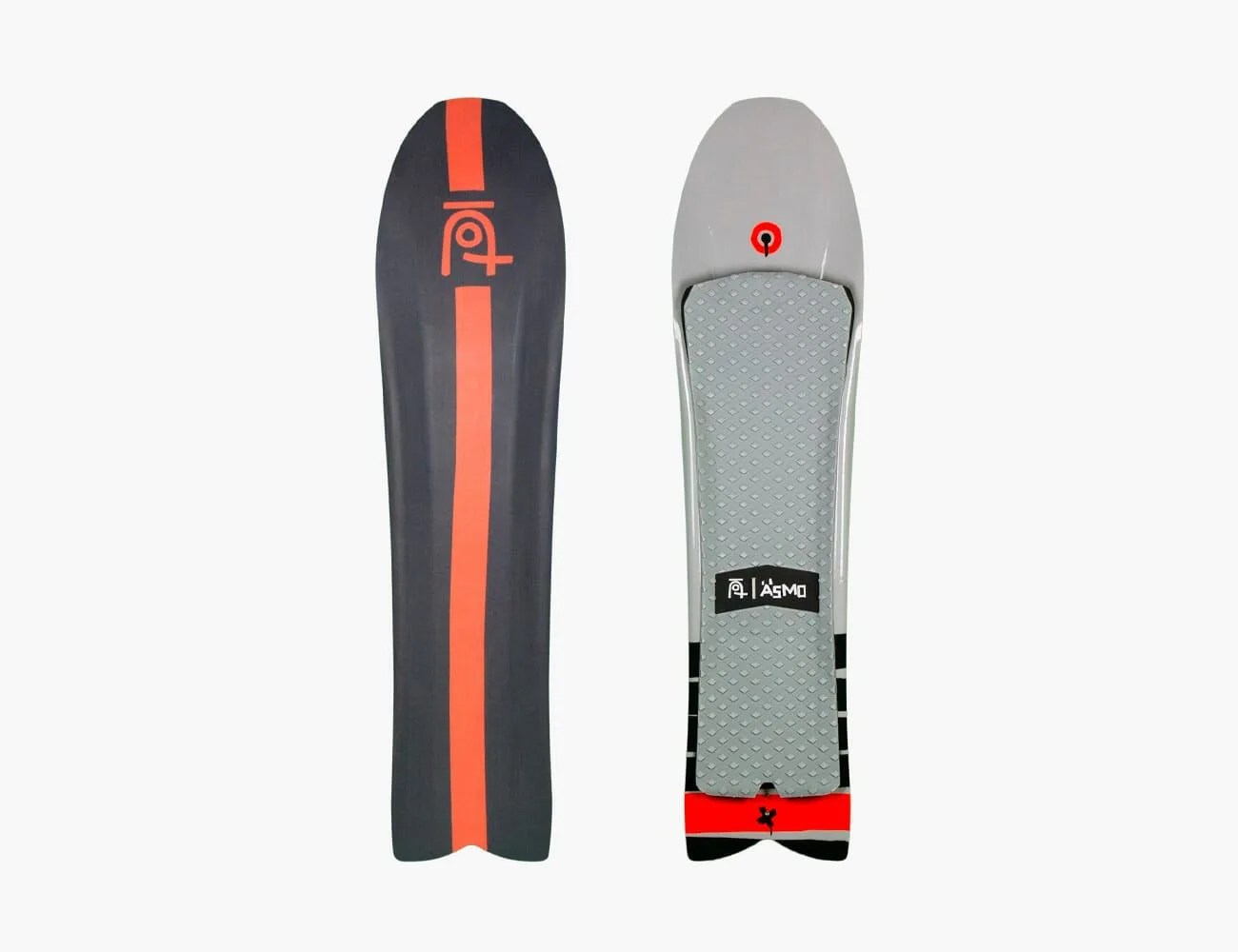The snowboard’s origin isn’t entirely agreed on. Many credit Jake Carpenter, the founder of Burton Snowboards, as the creator of the modern snowboard, but a decade before he began tinkering with his flexible, binding-equipped design, a man named Sherman Poppen fixed two small skis together for his daughters to ride down the hills of Muskegon, Michigan with. He improved the construction subsequently by using one piece of wood and attaching a rope handle to its nose, and with some branding advice from his wife, dubbed the contraption Snurfer.

Poppen couldn’t have known that his creation would help inspire the inception of a new winter sport to rival skiing — or that villagers in eastern Turkey have been riding similar boards made of steam-bent wood for nearly 300 years. And even if he had, he probably wouldn’t have guessed that over 50 years later, given all of the technological advancements and innovations that have spurred the snowboard industry onward, bindingless boards would again find themselves at the cutting edge.
No-boarding, snow surfing, pow surfing — these are all names assigned to the action of riding down a mountain on a board that doesn’t offer any straps or security. Exactly which term is correct is a matter of debate among some of the small makers attempting to bring this new/old vision of snowboarding to the masses.
Cholo Burns and the late Greg Todd founded their company, Noboard, in 2002 with a kit that includes a rubber pad and rope that connects to any snowboard, turning it into a no-board. Jeremy Jensen, the founder of Grassroots Powdersurfing, defines powdersurfing and the boards that he makes for the sport strictly as “without any form of bindings, straps, bungees, ropes, handles, skyhooks or any other gimmick to hold the board to your feet.” His company creates a range of unique boards with curved, three-dimensional bases — as opposed to the flat bottoms of traditional snowboards — for powdersurfing in all types of terrain and conditions.
Regardless of terms and definitions, all those flocking to this new sport agree on the fact that the object of the effort (and the sacrifice of bindings) is a feeling of freedom on the board akin to that of surfing.
And flocking they are — in addition to Noboard and Grassroots Powdersurfing, Austria-based Äsmo makes high-end powsurfers. Weston snowboards has one in its lineup. Jones Snowboards recently collaborated with San Diego surfboard shaper Chris Christenson on a collection of snowboards that draws on the same principles he uses to craft boards for ocean waves; among the line is the Mountain Surfer, a swallow-tailed board with a 3D base and neither bindings nor edges.
